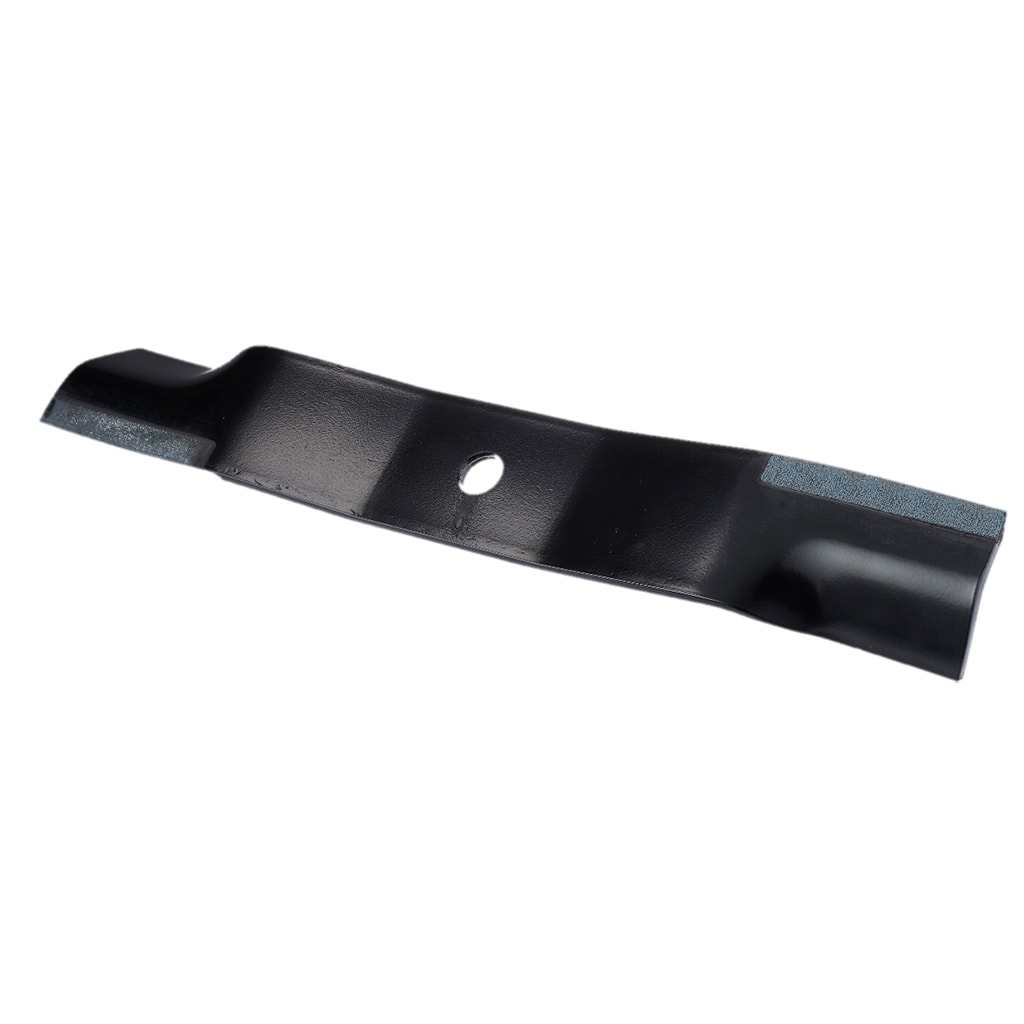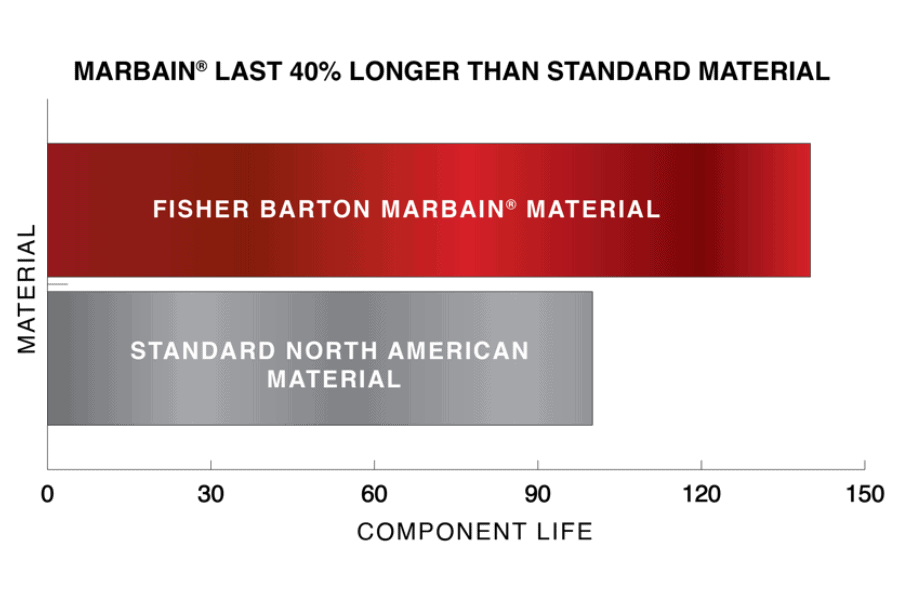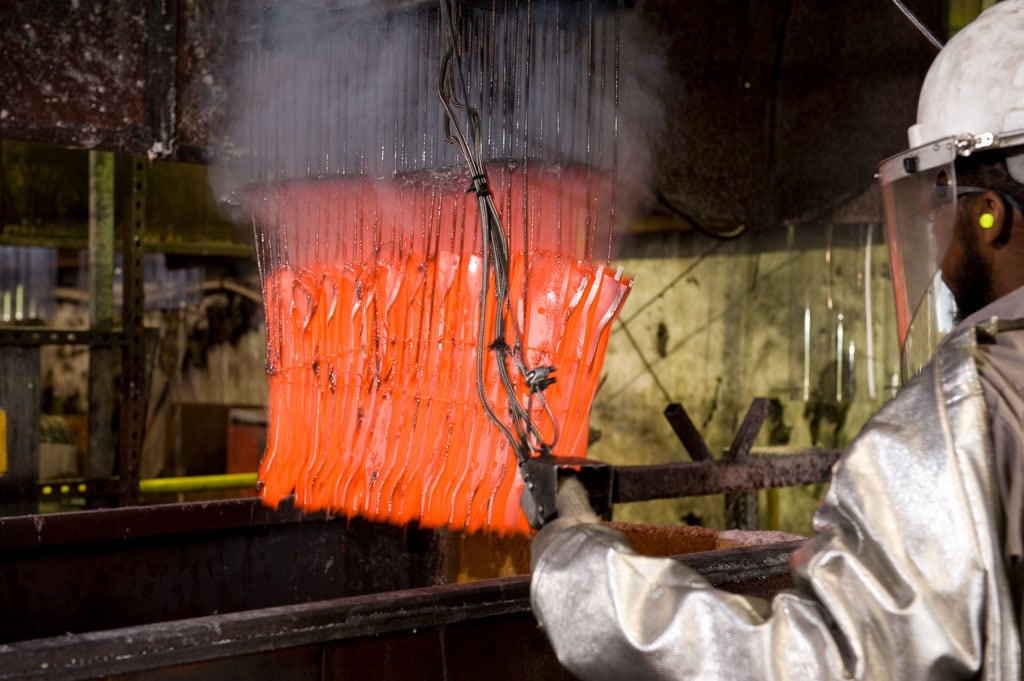The MARBAIN® Advantage
Fisher Barton developed MARBAIN to give our customers the hardest, strongest, longest-lasting, and best material in the industry! MARBAIN is material resulting from our exclusive, patented heat-treating process. Many components and all blades are heat-treated, but no blade or component in the industry can advertise the hardness offered by Fisher Barton. The MARBAIN heat-treating process is a controlled, proprietary operation that creates ultra-hard properties without the brittleness associated with typical high Rockwell “C” hardness levels.







